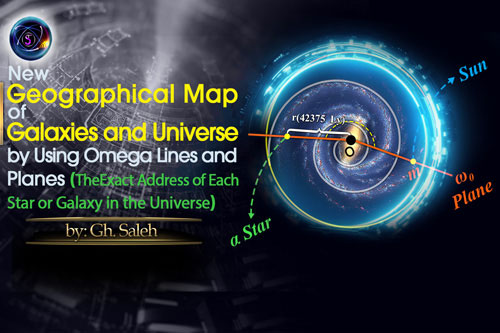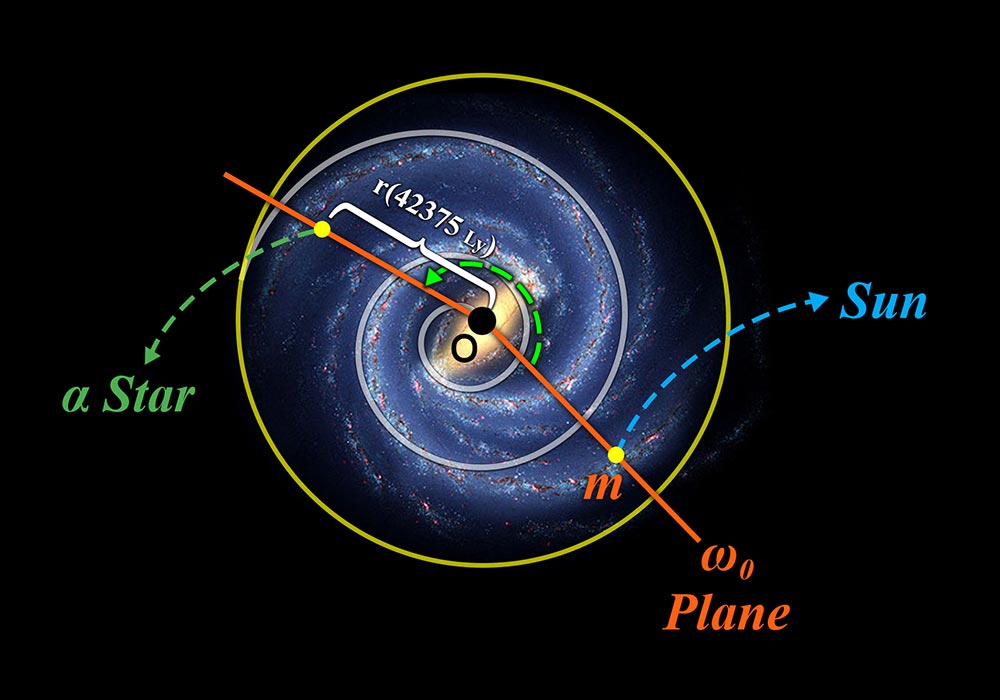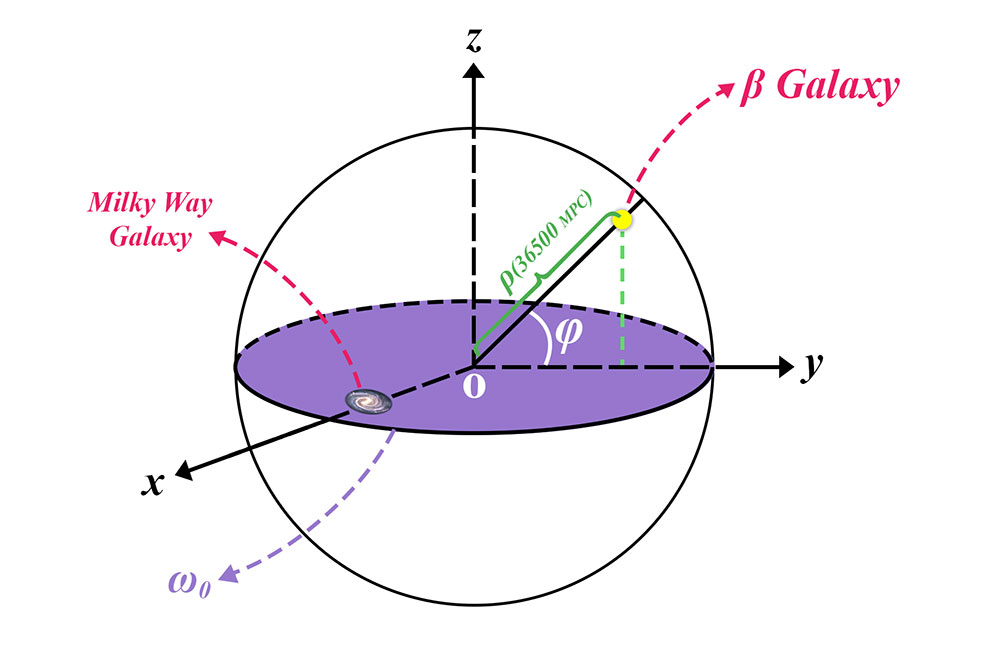
New Geographical Map of Galaxies and Universe by Using Omega Lines and Planes (The Exact Address of Each Star or Galaxy in the Universe)
One of the most beautiful galaxies in the universe is our Milky Way galaxy, which is an almost spiral and flat galaxy that has a center and rings that revolve around it.
There is a black hole in its center, which we call the central point “O”. We draw an imaginary line from the “O” point toward our Sun and extend it to the edge of the galaxy. We consider this imaginary line “OM” as the reference line and call it “ω0” line or “ω0” plane, which can actually be said it is the starting point to divide the plane of the galaxy into different “ω” planes.
It can be easily seen that the relevant plane can be divided into the following units: (400 gradians, 60 minutes, 60 seconds). If we multiply these 3 units together, we achieve a significant number (1,440,000), which actually tells us that we have divided the Milky Way galaxy into 1,440,000 different “ω” planes.

If we assume the number of stars of the Milky Way galaxy to be 100 billion and divide them by related number (1,440,000), we can obtain the average number of stars that exist in each “ω” plane, which is about 70,000. In fact, it can be said that about 70,000 stars are located in each line or plane.
Considering that the distance from the center of the galaxy to its edge is about 52,000 light-years, it can be said that for every one light-year, 1 or 2 stars can be found on this plane or line.
If we want to give an identification location code to “α” star, we only need to consider its distance from the center of the galaxy and its angle address. So with these descriptions and according to the figure, we can say that the code of a star can be written as follows:

Where the “r” is the distance of the star “α” from the center and the “A”, “B” and “C” are the angle in gradian, minute and second. According to the contents, for example, the code of star “α” can be written as below:

Where the upper line is the angle and the lower line is the distance. Considering that there are approximately 70,000 stars in each omega line or plane, and compared to the 52,000 light-years radial distance, it can be said that there are no more than 2 stars in each light-year distance.

Geographical map of the universe or the set of galaxies:
In order to show the geographical map of the universe and the related codes, it is enough to consider what was obtained for the Milky Way galaxy for a plane of the globe of universe and add an angle to it to show different planes. In this model, the origin is the center of the universe or the point of the Big Bang, and the plane “ω0” is the plane crossing the "OM" line in the Milky Way galaxy and the origin. The rest of the calculations are the same as the calculations inside the galaxies.
Note: The direction of movement does not matter whether we take the “ω” planes clockwise or anti-clockwise and it is contractual.
So, it is enough to add an angle based on radians to the previous or mentioned specifications, where “ρ” is the distance of the galaxy to the center of the universe, and the radian angle demonstrates the location of that particular galaxy on the perimeter of circle with “ρ” radius.
For example, we consider a galaxy in the universe at point “β”:

Where “ρ” is the distance of the galaxy from the center of the universe in megaparsec and "φ" is the angle in radians that demonstrates the particular plane where the galaxy located on.
The “ρ” is between 0 and 1024 megaparsecs and the "φ" is between 0 and 2π

For example:





